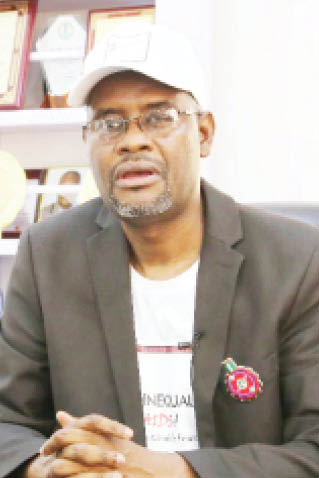Dr. Gambo Aliyu is the Director-General of the National Agency for the Control of AIDS (NACA). In this interview ahead of the World AIDS Day, he speaks on the agency’s efforts in tackling inequities and ending AIDS, addressing the impact of COVID-19 on the HIV response, mother-to-child transmission prevention and funding, among others.
As Nigeria joins in marking World AIDS Day tomorrow, how would you describe the country’s HIV response journey in the last two decades?
The response has been emerging and building momentum. In the last three years, the momentum reached a crescendo, the critical limit.
The output we are seeing has been remarkably different from what has happened before the last three years. So the last three years of the last 20 years of HIV response in Nigeria has been a turning point.
We have seen growth in the number of people that are living with HIV/AIDS that are receiving treatment and have their viral load suppressed. Once the viral load is suppressed, if we don’t see it, it doesn’t get transmitted to other people.
Only about 40 per cent of pregnant women are estimated to have access to prevention of Mother to Child Transmission (PMTCT) of HIV/AIDs services. What are the key drivers of this and how are you addressing it?
The 40 per cent access to treatment generally was in 2016. Things have changed from 2016 to date. If you look nationally, the numbers we have that have accessed to treatment is almost 90 per cent.
We have 1.6 million out of a total of 1.8 million people living with HIV/AIDS that have access to treatment.
The number of new HIV infections that are being detected among newborns is estimated to be about 20,000 to 21,000 annually.
About 13,000 out of about 150,000 children living with HIV/AIDS in Nigeria die annually.
We are working towards expanding access to prevention of mother-to-child transmission of HIV (PMTCT) services. And the way we plan to do it is to have people realize that the newborn or the unborn baby has right to be protected from HIV and that starts with not only the mother but the parents in general.
The mother and father should know that the unborn baby under their custody has the right to be protected from HIV and must as a matter of responsibility ensure she has access to HIV testing services during that pregnancy.
If the mother is HIV positive, treatment should start in earnest immediately and delivery should be at a facility where caution would be taken to prevent mother to child transmission during delivery, immediately after delivery and during the breastfeeding period.
What are you doing to bridge the inequalities inequities in HIV response, particularly in access to HIV treatment that may have been worsened by the COVID-19 pandemic?
We have been working over the last one and a half years, immediately after the lockdown which is one of the periods where the inequalities or gap in terms of access was very prominent.
Immediately after that – in terms of access to HIV services, access to testing services, access to treatment services – we have seen a jump that we haven’t seen in the years before COVID-19 and this is because we divided into groups. So some people go to the conventional clinics and facilities to access HIV services, while some go to the communities.
We go near the individual households and provide services to the community to improve access to testing and treatment services and this has yielded significant outcomes especially with the service we now giving called ‘Integrated Services’.
Integrated services mean you go out to look for multiple diseases at the same time. We would be out looking for COVID, looking for tuberculosis and looking for cases of HIV in the community.
At the end of the day, you see a harvest that it is not only HIV alone that is significant, in terms of the number of people that have tuberculosis and COVID-19 that were identified as well as HIV services.
And this enables us to now use resources more efficiently instead of paying for services in the community for only HIV. The money we pay for HIV now caters for COVID and for tuberculosis.
With the backdrop of heavy dependence on donor funding for HIV response in the country, what is the government doing to ensure sustainable financing for HIV?
The federal government has tremendously increased funding for HIV. From supporting the treatment of 50,000 individuals two years back to now supporting treatment of about 100,000 people living with HIV/AIDS.
And it is determined to add an additional 50,000 next two years to make it 150,000. On the other hand, the private sector is also coming together to form the HIV Trust Fund of Nigeria.

 Join Daily Trust WhatsApp Community For Quick Access To News and Happenings Around You.
Join Daily Trust WhatsApp Community For Quick Access To News and Happenings Around You.


